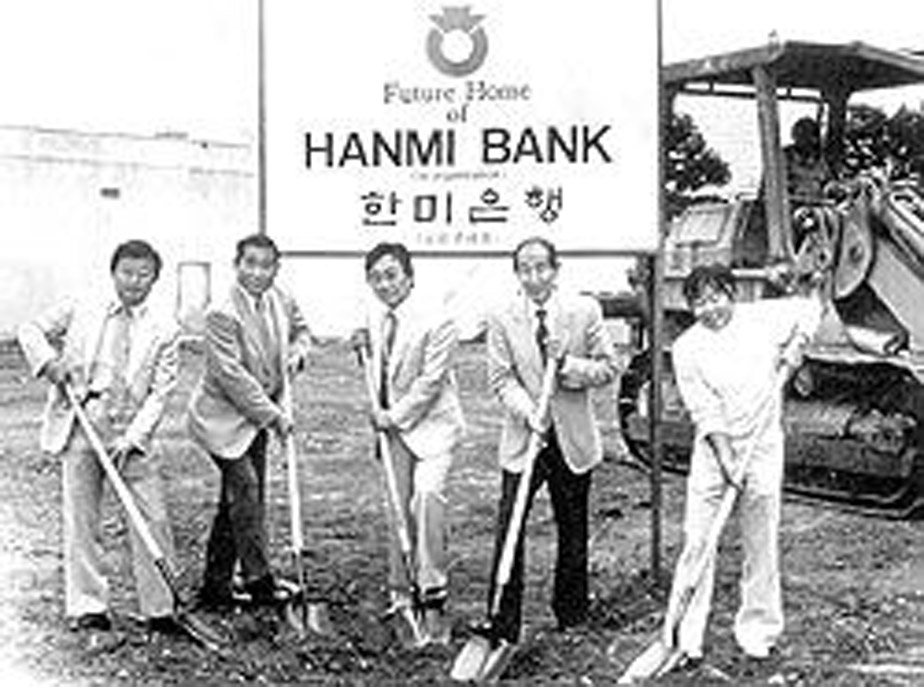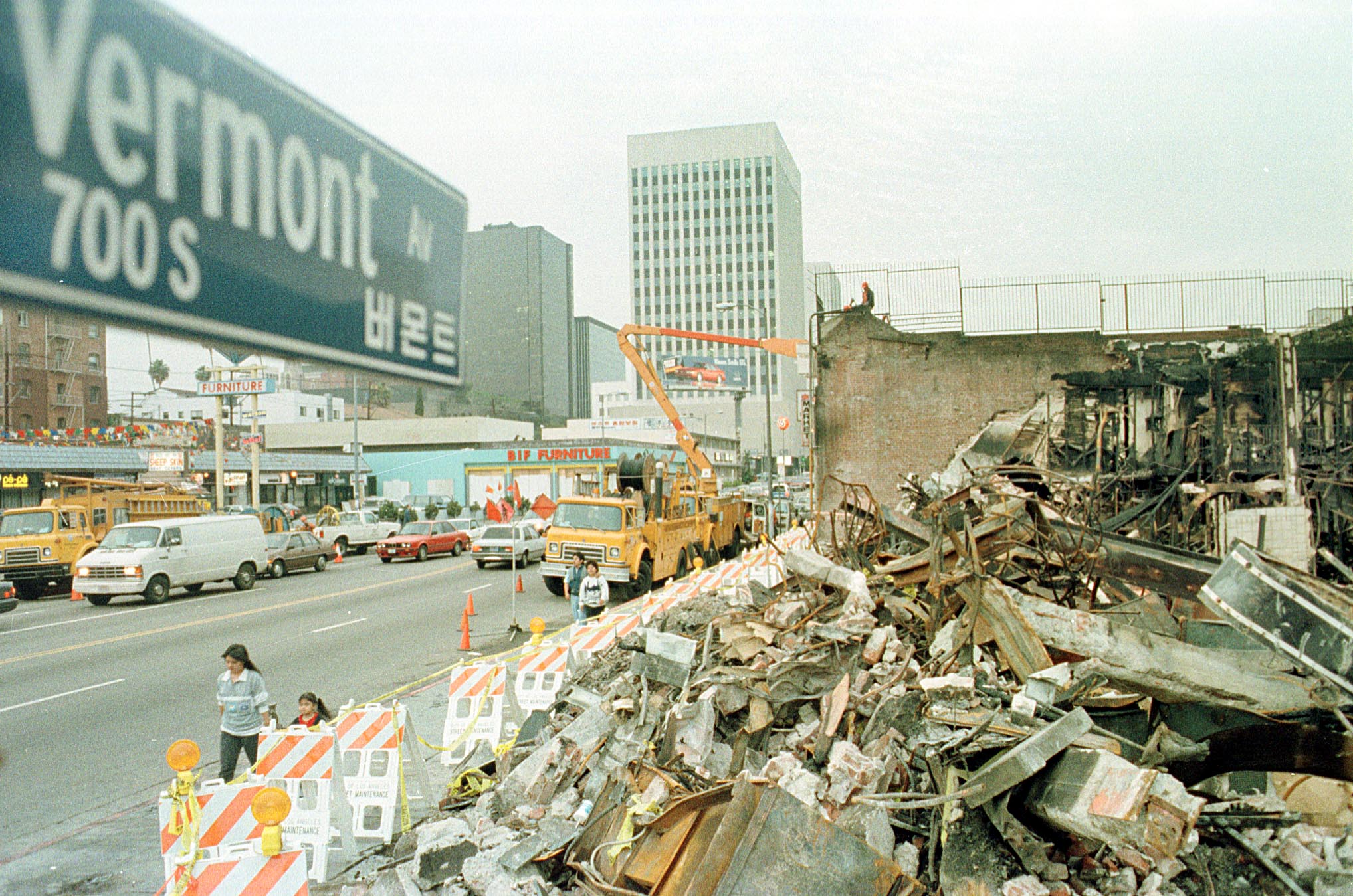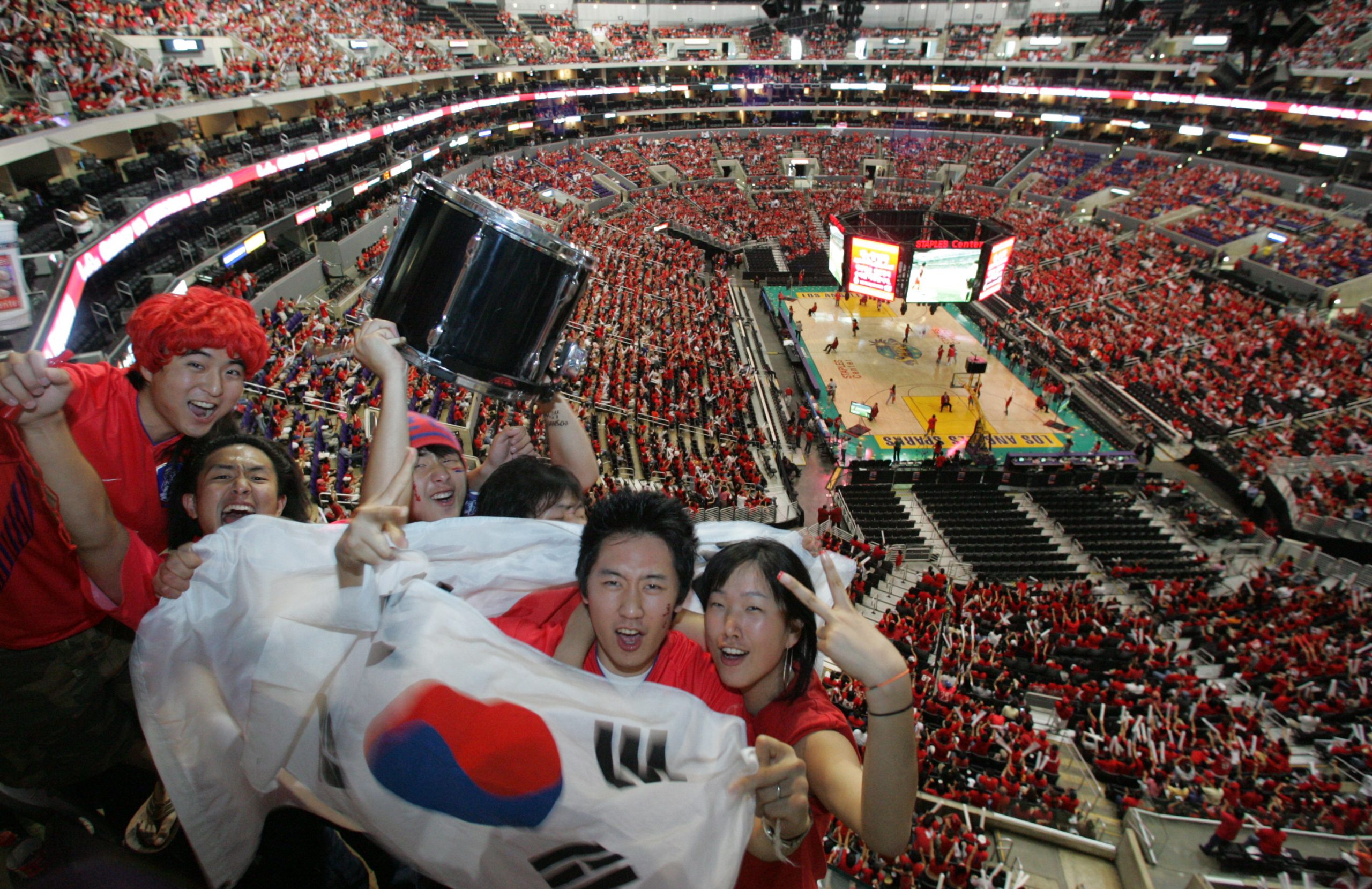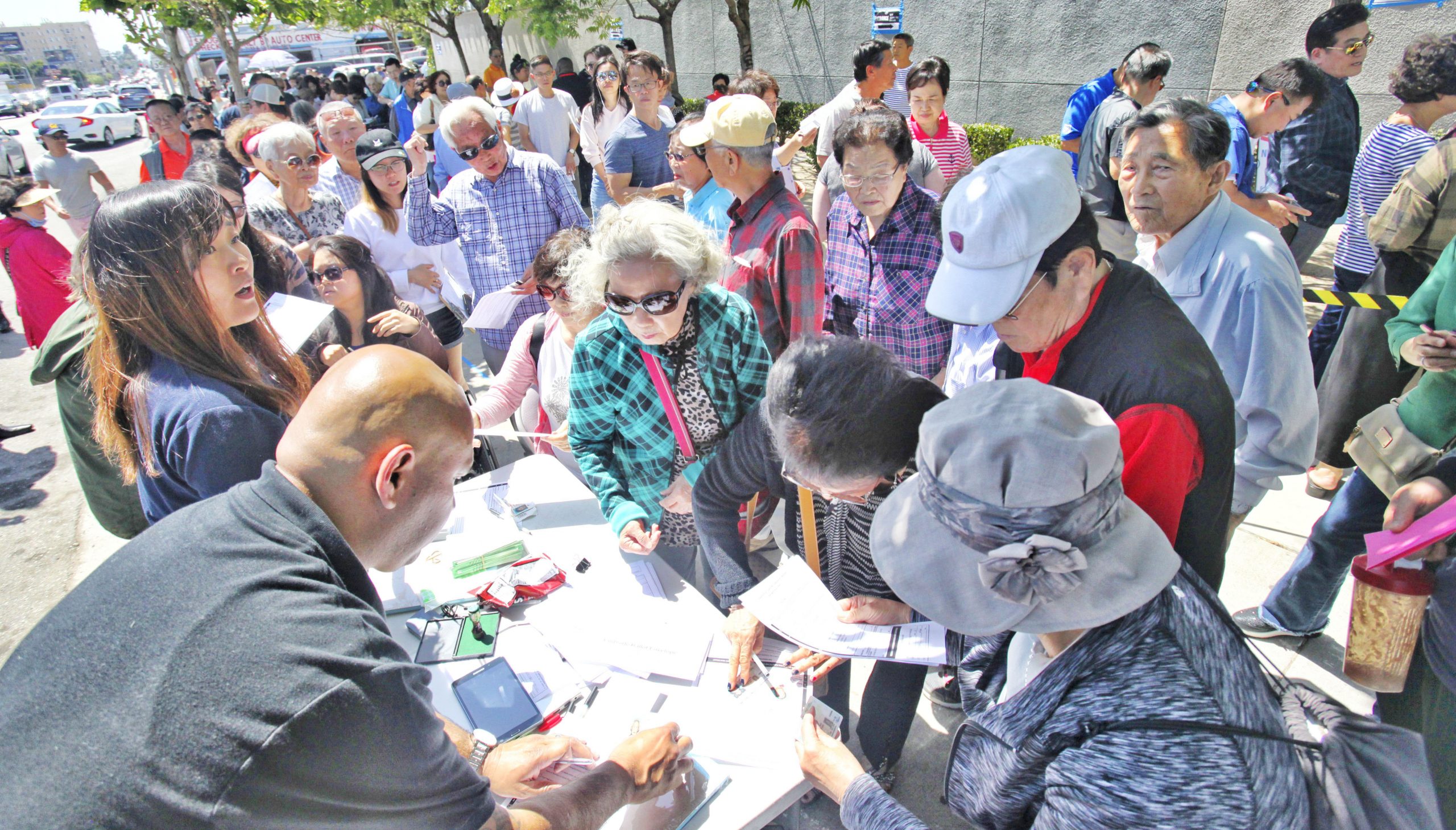Immigration surge fuels the growth of businesses
[1970s]
The 1970s was a golden age for the Korean-American business sector. The capital accumulated by the first generation of immigrants was heavily invested in private businesses, and the rapid increase in immigration during this time played a role in the expansion of the Korean commercial sphere.
In the late 1960s, Korean-American businesses began to establish themselves on Olympic Boulevard, centered on the “Olympic Market”, and later, Korean-American businesses opened one after another along 8th Street, peaking at “Dongseo Food” in the late 1970s.
By the end of 1979, the number of Korean American businesses concentrated on Olympic and 8th streets was over 300, with seven large-scale shopping centers.
In the early 1970s, Korean-American businesses were concentrated in food and beverage services, such as liquor shops, supermarkets, grocery stores, and hamburger shops. With a small base of $10,000 to $20,000, such labor-intensive businesses boomed.
This was also when California Korea Bank opened, bringing Korean financial capital into Koreatown’s economy. A year after the bank opened, it had more than 1,000 business accounts and provided more than $10 million in loans to Koreatown, mainly SBA loans.

Accumulated capital facilitates development
[1980s]
Financial institutions proliferated, allowing Korean Americans to reinvest their accumulated savings in the Korean American business sector and develop the economy.
In the 1980s, Korean-American banks were established one after another, including Global Bank (1981), followed by Hanmi Bank (1982), Center Bank (1986), and Nara Bank (1989). The number of bank branches grew from just one in the 1970s to more than 20, and the size of assets grew from $10 million to $1.3 billion.
This banking growth led to an increased supply of funds to Korean Americans, and the Korean commercial sector centered on Olympic Boulevard-8th Street in the 1970s expanded to Vermont and Western Avenue, and 3rd Street. With their accumulated wealth, Korean Americans sought to expand their businesses and diversify their industries.
The number of sewing businesses increased rapidly, and fabric and general merchandise importers also moved into the downtown area, creating a large wholesale network.
In 1989, the number of supermarkets and liquor stores increased sevenfold in seven years from 365 in 1982 to 2,700, and the number of laundries increased nearly quadruple to 1,800.
The number of Korean-American businesses grew to more than 10,000 in total, including 900 sewing businesses, 600 auto-related businesses, and 1,800 other retail and service businesses, more than four times more than in the early 1980s.

Rising from ashes of LA riots and earthquake
[1990s]
The quantitative expansion of Korean-American businesses in the 1980s began to slow down in the 1990s due to intense competition. At the same time, the Korean-American business community shrank due to several adverse events such as the LA riots and the Northridge earthquake.
After the LA riots, Korean Americans shifted their business preferences from labor-intensive industries such as liquor stores and laundries to capital-intensive and livable industries such as franchising. The accelerated diversification of industries has also led to layoffs and restructuring of businesses.
The number of political aspirants increased as Koreans became interested in political power at this time. These efforts would later pay off with the election of Korean-American politicians.
Business management classes opened one after another, starting with the UCLA Business and Management Course in 1992. Another prominent phenomenon of this period was the spread of academic enthusiasm among Korean-American business owners who realized that the recession could not be tackled with old-fashioned management.
As of July 1995, the number of Korean-American businesses in Los Angeles County was 1,878, according to the business directory published by the Korea Daily. Although the Korean-American business community has grown enormously over the 30 years, the majority of Korean-American businesses were mostly unproductive, with only 2.97% of all businesses being manufacturing businesses at the end of 1989.

Enduring the aftermath of 9/11 to hit its stride
[2000s]
Koreatown experienced rapid growth in the 2000s, even as it was plagued by two major headwinds, the 9/11 attacks in the early 2000s and the global financial crisis later in the decade.
In 2001, the year of the 9/11 attacks, the U.S. GDP recorded a negative growth of 1.4%, and Koreatown’s economy also suffered. Retailers were particularly hit hard. U.S. immigration policy also shifted toward restrictions.
While many businesses that catered to first-generation Korean immigrants struggled, those that actively sought out non-Korean customers or kept up with changing times flourished in the mid-2000s real estate boom.
Thanks to a strong economy, the U.S. real estate sector began to revitalize, and Koreatown around Wilshire Boulevard saw a flurry of development and building purchases. Aroma Wilshire Center, the largest sports center in the Korean-American community, and Solaire, a high-rise residential condominium constructed by a Korean-American developer, all appeared in the 2000s.
Wun Hwa Choi, CEO of Quantum F&A, who was then CEO of Commonwealth Business Bank, analyzed that the Korean-American economy in Los Angeles was worth $14 billion to $18 billion in 2004, according to the statistics from Korean-American bank transactions.
However, the subprime mortgage crisis that erupted in 2007 led to the global financial crisis, and Korean-American neighborhoods fell on hard times again.

Post-financial crisis construction boom
[2010s]
The impact of the global financial crisis was severe, but Koreatown proved resilient. By 2012, the economy had bottomed out and began to rebound. Ultra-low interest rates at zero percent and liquidity from quantitative easing policies revitalized Korean-American businesses and the real estate market.
The 2010s saw a real estate redevelopment boom in Koreatown. Residential real estate redevelopments began to take off as non-Korean investors joined the market, and projects to build mixed-use condominiums and apartments started in earnest. As a transportation hub, Koreatown emerged as the center of LA’s redevelopment.
In September 2017, ten Korean supermarkets and 32 stores were operating in Southern California, with 10 competing in Koreatown alone.
Korean companies have also continued to expand into LA. As of 2019, there were 149 Korean companies in LA County.
In 2018, Korean Americans in LA showed their unity in defeating a ballot measure that would have split Koreatown into Bangladesh town (Little Bangladesh) with 98.5% voting against it.
The 2010 federal census counted 108,282 Koreans in Los Angeles. This is an 18.2% increase from 10 years ago. When analyzed by zip code, the Korean-American population in the Koreatown neighborhood was 57,730. That’s 53.3% of the city’s Korean-American population living in Koreatown.

K-culture boom revitalizes Koreatown
[2020s]
Koreatown was hit hard by the COVID-19 pandemic as well in the early 2020s.
Business owners faced shutdowns and sluggish sales, but were able to weather the storm with government subsidies and responded by opening patios, introducing takeout and delivery services, and expanding online transactions.
As the shock of the pandemic wore off, the downturn in the fabric and fashion market, which has been a driving force in the Korean-American economy in LA, was an issue. Failing family succession, rising minimum wages, the proliferation of online wholesale platforms in the apparel market, rising homelessness, and deteriorating public safety have hit the market which has been weakened since the mid-2010s. Many businesses have relocated to suburbs of metropolitan LA or out of state, while others have closed down altogether.
As office building vacancy rates skyrocketed due to the spread of remote work, sales at nearby businesses fell. The new buildings from the previous redevelopment wave have driven up rents, causing gentrification as unaffordable Korean-American residents and businesses move to areas outside of Koreatown.
A recent change in Koreatown is the rise of Korean culture businesses, including K-dramas and food.
Korean dramas have attracted more non-Koreans to Korean barbecue and fried chicken restaurants, coffee shops, and bars, even leading to fierce competition between Korean fried chicken brands in Koreatown.

BY HOOSIK WOO [woo.hoonsik@koreadaily.com]

![Korean President Yoon Suk Yeol just got ousted. What’s next? President Yoon Suk Yeol attends the opening session of the Ministerial Conference of the Third Summit for Democracy in March last year. The Constitutional Court upheld the National Assembly’s impeachment of Yoon, ousting him from office on April 4. [YONHAP]](https://www.koreadailyus.com/wp-content/uploads/2025/04/0404-Yoon-100x70.jpg)
![Korean President Yoon Suk Yeol ousted from office after unanimous Constitutional Court ruling President Yoon Suk Yeol, right, delivers his closing statement at the 11th and final hearing of his impeachment trial at the Constitutional Court in Jongno District, central Seoul, on Feb. 25. [CONSTITUTIONAL COURT]](https://www.koreadailyus.com/wp-content/uploads/2025/04/0403-impeach-100x70.jpg)
![Clovine accelerates global expansion in collaboration platform market Website of Clovine, a cloud-based project management provider [Screenshot]](https://www.koreadailyus.com/wp-content/uploads/2025/04/0403-clovine-100x70.jpg)
